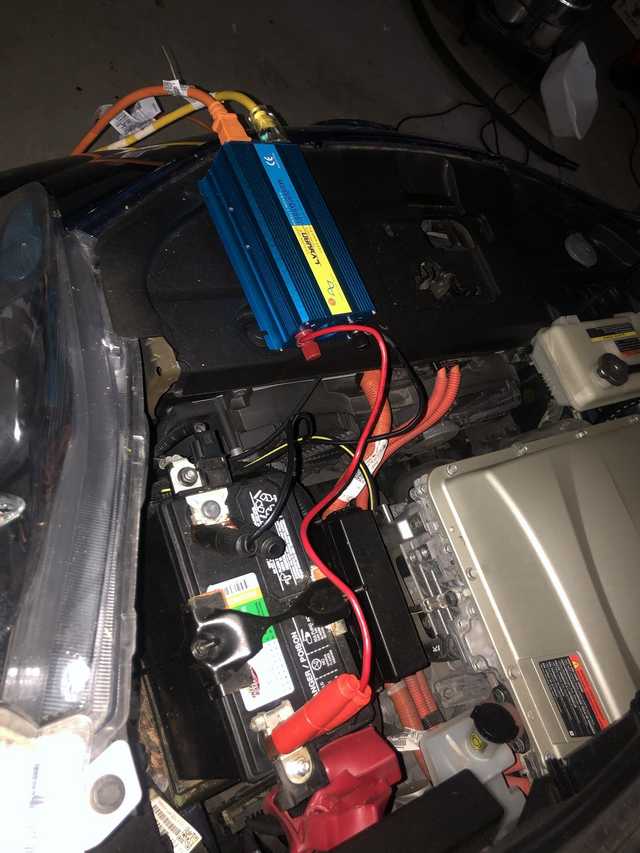smkettner
Well-known member
With a 5000 watt inverter you can kill the vehicle 12v battery, max out the DC-DC converter and still run into low voltage shut down. Everything is stressed drawing even half the inverter rating and good luck with surge performance to start a motor.patatewz said:what is the difference in using to batteries in the setup?
if i use only one batteries with a 100 amp fuse, the dc dc converter will be protected from to much draw with the 100 amp fuse?
2 batteries with help in what way? can you explain to me the difference?
To properly drive 5000 watt 12v inverter you need 4+ 12v batteries in parallel. Even this could be marginal. If you jump this battery bank to the LEAF or other EV then the vehicle will keep sending power at a reasonable level of 800 to 1000 watts. When you exceed this power level the multiple battery bank will provide most of the power. For extended run at high power you will encounter a low voltage shut down of the inverter.
If you connect to the vehicle with smaller wire such as #6 and 10 to 20 feet away the wire resistance should prevent over loading the small vehicle 12v battery and DC-DC converter. Still need a fuse at about 80 amps just in case. This will allow say to run the fridge continuous and then maybe the microwave for a few minutes to warm your pizza.
The good thing is that you are probably getting a low cost 5000 watt inverter from China that is really only good for 1500 to 1800 watts on a continuous basis. Real 5000 watts will be pulling 450+ amps from the battery.

